Activated microglia cause metabolic disruptions in developmental cortical interneurons that persist in interneurons from individuals with schizophrenia
- PMID: 33097921
- PMCID: PMC7769122
- DOI: 10.1038/s41593-020-00724-1
Activated microglia cause metabolic disruptions in developmental cortical interneurons that persist in interneurons from individuals with schizophrenia
Abstract
The mechanisms by which prenatal immune activation increase the risk for neuropsychiatric disorders are unclear. Here, we generated developmental cortical interneurons (cINs)-which are known to be affected in schizophrenia (SCZ) when matured-from induced pluripotent stem cells (iPSCs) derived from healthy controls (HCs) and individuals with SCZ and co-cultured them with or without activated microglia. Co-culture with activated microglia disturbed metabolic pathways, as indicated by unbiased transcriptome analyses, and impaired mitochondrial function, arborization, synapse formation and synaptic GABA release. Deficits in mitochondrial function and arborization were reversed by alpha lipoic acid and acetyl-L-carnitine treatments, which boost mitochondrial function. Notably, activated-microglia-conditioned medium altered metabolism in cINs and iPSCs from HCs but not in iPSCs from individuals with SCZ or in glutamatergic neurons. After removal of activated-microglia-conditioned medium, SCZ cINs but not HC cINs showed prolonged metabolic deficits, which suggests that there is an interaction between SCZ genetic backgrounds and environmental risk factors.
Conflict of interest statement
Disclosure of Potential Conflicts of interest
Thomas A. Lanz and Hualin S. Xi were employees of Pfizer, Inc at the time this work was performed. Joseph T. Coyle reports holding a patent on the use of D-serine to treat serious mental disorders that is owned by Massachusetts General Hospital and consulting with Concert Pharm.
Figures

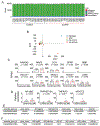

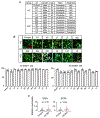


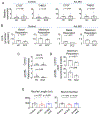

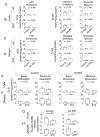

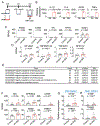






References
-
- Mallard C, Welin AK, Peebles D, Hagberg H & Kjellmer I White matter injury following systemic endotoxemia or asphyxia in the fetal sheep. Neurochemical research 28, 215–223 (2003). - PubMed
Online Methods References
-
- Herring AH Applied Longitudinal Analysis, 2nd Edition, by Fitzmaurice Garrett M., Laird Nan M., and Ware James H., John Wiley & Sons, 2011. Journal of Biopharmaceutical Statistics 23, 940–941, doi:10.1080/10543406.2013.789817 (2013). - DOI
-
- Laird NM & Ware JH Random-effects models for longitudinal data. Biometrics 38, 963–974 (1982). - PubMed
Publication types
MeSH terms
Substances
Grants and funding
LinkOut - more resources
Full Text Sources
Other Literature Sources
Medical

